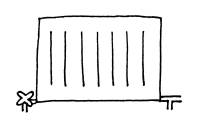Negotiating FRI Lease Clauses
Your Price Our Terms!
We market the services of independent Surveyors. Surveyors pride themselves on a high standard of work. We can offer Schedules of Condition with regard to leases , Property Reports, Schedules of Dilapidations, Section 18 Valuations, Scott Schedules, Commercial Building Surveys, Structural Reports, Specific Defects Reports. Note these are not for bank lending but are to advise you how much we feel the property is really worth. If you have a property problem we may even already have written an article on it and we would refer you to the many articles we have on our website.
All our independent surveyors are more than happy to chat to you about your property. Please Free Phone us on 0800 298 5424 and surveyor will call you back.
Free phone 0800 298 5424
Full repairing and insuring leases or limited liability leases
 Generally there has been the rise and rise of full repairing and insuring leases, known affectionately as FRI leases. From a property investors point of view we can see why the landlord wishes to have full repairing leases as he has an income generating assets, which doesn't have any liability for repairs whilst rented and at the end of the rental period / lease period a dilapidations is served and the property is brought back to a good standard all going well. That is alright in a strong property market, or even an average property market, but in a poor property market the landlord needs to adapt and adjust to rent their properties. Equally a property that is in a secondary or tertiary location may also not be able to hold up to a full repairing and insuring lease.
Generally there has been the rise and rise of full repairing and insuring leases, known affectionately as FRI leases. From a property investors point of view we can see why the landlord wishes to have full repairing leases as he has an income generating assets, which doesn't have any liability for repairs whilst rented and at the end of the rental period / lease period a dilapidations is served and the property is brought back to a good standard all going well. That is alright in a strong property market, or even an average property market, but in a poor property market the landlord needs to adapt and adjust to rent their properties. Equally a property that is in a secondary or tertiary location may also not be able to hold up to a full repairing and insuring lease.
Full repairing and insuring leases, is the landlord prepared to negotiate?
One of the very first things you need to decide is whether the landlord you are dealing with is prepared to, or able to, negotiate on the terms of the lease. If the landlord is not in negotiating mode then it is simply best to move on to look for another property and cut your losses at this stage, because he certainly is not going to be prepared to negotiate during the course of the lease or at the end of the lease if he is not prepared to negotiate at the start.
Negotiate on the important things
 If you have a surveyor carry out a property report, also known as a structural report or building survey, on the property then you will understand what the key areas are. We always recommend that you go and meet your surveyor (if they are not prepared to meet you simply go to a different surveying company) and a phone call after the survey is not acceptable either, you really do need to meet them at the property. In our experience problems can occur particularly in the following areas:
If you have a surveyor carry out a property report, also known as a structural report or building survey, on the property then you will understand what the key areas are. We always recommend that you go and meet your surveyor (if they are not prepared to meet you simply go to a different surveying company) and a phone call after the survey is not acceptable either, you really do need to meet them at the property. In our experience problems can occur particularly in the following areas:
High level problems
 These are such things as chimney problems, roof problems, valley gutter problems, skylight / roof window problems or gutters and downpipe problems. Any / all of these problems are often inter-related and can result in major works where scaffolding is necessary, to give safe access to those carrying out the work.
These are such things as chimney problems, roof problems, valley gutter problems, skylight / roof window problems or gutters and downpipe problems. Any / all of these problems are often inter-related and can result in major works where scaffolding is necessary, to give safe access to those carrying out the work.
Equally, wall work at high level can be expensive as again scaffolding is needed.
Structural movement and cracking
If there are fundamental problems with the property if these are spotted on day one then they can be excluded from the lease. For example, we recently dealt with a property where the cracking caused by the nearby tree has been excluded from the lease. The cracks have made absolutely no difference to our client as it was a storage building and was a good solution for both the landlord and the tenant.
Heating and air conditioning
 Services tend to wear out much more quickly than building elements, so your surveyor needs to identify if there are any items of plant that will need replacing during the course of your lease. If your surveyor hasn't got the expertise then he needs to be accompanied by a building service engineer or appropriate tradesman.
Services tend to wear out much more quickly than building elements, so your surveyor needs to identify if there are any items of plant that will need replacing during the course of your lease. If your surveyor hasn't got the expertise then he needs to be accompanied by a building service engineer or appropriate tradesman.
Statutory regulations
Most leases have the requirement to meet statutory regulations. This could relate to anything from asbestos surveys to compliance with the Equality Act to future heating problems, particularly in office situations.
Dampness
 Dampness can very much be a hidden problem in properties, particularly older properties, for example, in a retail environment this can lead to unpleasant odours and deterioration to wood elements, such as a suspended timber floor at ground floor, joist and floorboard at first floor or to a roof structure, particularly where valley gutters are present, all of which would need repairing and renewing under a full repairing lease. At best it is a good idea to get them excluded from the lease, at worst it is best to budget for them.
Dampness can very much be a hidden problem in properties, particularly older properties, for example, in a retail environment this can lead to unpleasant odours and deterioration to wood elements, such as a suspended timber floor at ground floor, joist and floorboard at first floor or to a roof structure, particularly where valley gutters are present, all of which would need repairing and renewing under a full repairing lease. At best it is a good idea to get them excluded from the lease, at worst it is best to budget for them.
Buy right
 It is often said in the property world that you need to buy right. By this we believe it means not only to buy at the right market rental value but also to buy on the correct terms. Therefore, negotiate hard to get items excluded from the lease. When we worked for a national company that were bringing in full repairing and insuring leases to all their properties, whilst the standard line was that the lease was the lease and there would be no alterations and amendments, many of the leases were altered and amended.
It is often said in the property world that you need to buy right. By this we believe it means not only to buy at the right market rental value but also to buy on the correct terms. Therefore, negotiate hard to get items excluded from the lease. When we worked for a national company that were bringing in full repairing and insuring leases to all their properties, whilst the standard line was that the lease was the lease and there would be no alterations and amendments, many of the leases were altered and amended.
Some examples of full repairing and insuring leases that we have had the clauses amended on prior to the tenant taking on the lease
• A large pub / hotel, originally being a railway hotel, which was four or five stories high (we cannot recall which) had wet rot to the upper floors and the roof structure. The entirety of this was excluded from the lease.
• A high street primary location, where we recommended the roof excluded from the lease. Originally the answer was no and then the landlord opened up the roof so he could actually view it himself and then agreed to remove it from the lease.
• A public house, which was Listed and had several outbuildings in the garden, although they were large were not of use or an integral part of the business and, for want of a better term, in a dilapidated state, were excluded from the lease.
• A shop in a primary location, in a conservation area. The adjoining property, also owned by the landlord, had a defective inglenook chimney (yes we did get into the adjoining property). This was at least on an internal redecoration limited liability lease.
We have also negotiated over the years many rent free periods (over and above the rent free periods already gained by the future leaseholders). We have also gained landlords contribution to work.
You may be interested to read these articles on Leases and Dilapidations too:
Dilapidations Break Clauses
Break Clauses - Are they Worth it?
My First Lease What should I do?
Your Lease in Plain English
Do not let the end of your Lease end your Business
If you truly do want an independent expert opinion from a chartered surveyor, with regard to leases, dilapidations, schedules of condition, dilaps claims, scots schedules, commercial structural surveys, commercial building surveys, property reports, structural reports, engineers reports, specific defects report, structural surveys, home buyers reports or any other property matters please contact 0800 298 5424 for a chartered surveyor to give you a call back.
If you have a commercial leasehold or freehold then you may wish to look at our Dilaps Website at www.DilapsHelp.com and for Disputes go to our Disputes Help site www.DisputesHelp.com .
We hope you found the article of use and if you have any experiences that you feel should be added to this article that would benefit others, or you feel that some of the information that we have put is wrong then please do not hesitate to contact us (we are only human). The contents of the website are for general information only and is not intended to be relied upon for specific or general decisions. Appropriate independent professional advice should be paid for before making such a decision.
All rights are reserved the contents of the website are not to be reproduced or transmitted in any form in whole or part without the express written permission of 1stAssociated.co.uk.

